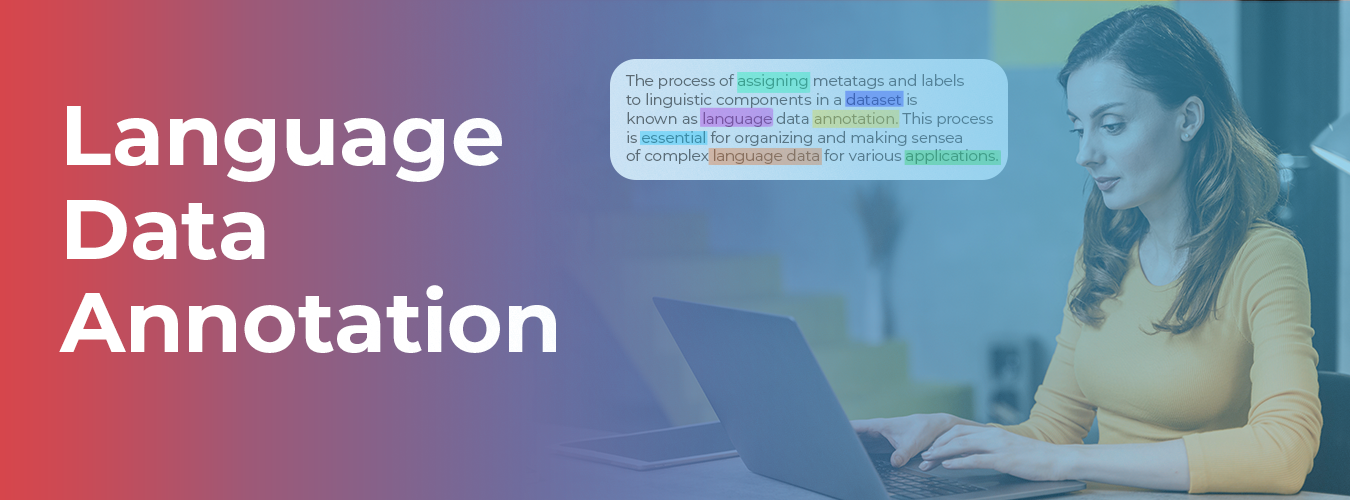Language Data Annotation: The Backbone of Multilingual AI Systems
Language data annotation is the process of labeling or tagging language data, such as text, speech, or images, to make it understandable to machine learning models.

In today’s increasingly interconnected world, the demand for multilingual AI systems is skyrocketing. Businesses and organizations seek to engage with diverse audiences across the globe, making language data annotation a crucial aspect of their AI strategies. But what exactly is language data annotation, and why is it so vital? Let’s dive into this fascinating field and explore its significance, applications, and benefits.
What is Language Data Annotation?
Language data annotation is the process of labeling or tagging language data, such as text, speech, or images, to make it understandable to machine learning models. This annotated data serves as the foundation for training various natural language processing (NLP) applications, including speech recognition, machine translation, sentiment analysis, and more.
The annotation process involves several tasks such as identifying parts of speech, tagging entities, labeling sentiment, and even more complex tasks like coreference resolution and discourse analysis. The goal is to provide machines with the context they need to understand and interpret human language accurately.
Why is Language Data Annotation Important?
Language data annotation is the cornerstone of any NLP project. Without accurately annotated data, AI models would struggle to understand the nuances and complexities of human language. Here’s why it’s so important:
-
Enhancing Accuracy: Properly annotated data ensures that AI models are trained on high-quality, relevant information. This improves the accuracy of predictions and results, leading to more reliable AI applications.
-
Supporting Multilingual Systems: In a world where businesses operate across borders, the ability to understand and process multiple languages is critical. Language data annotation supports the development of multilingual AI systems that can interact with users in their native languages.
-
Enabling Sentiment Analysis: Understanding the sentiment behind a piece of text is crucial for applications like social media monitoring, customer feedback analysis, and more. Accurate annotation helps models identify positive, negative, or neutral sentiments, enabling businesses to gain insights from user-generated content.
-
Facilitating Machine Translation: Machine translation systems rely heavily on annotated language data to provide accurate translations. Annotated data helps in understanding the structure and meaning of sentences, leading to more precise translations.
Key Applications of Language Data Annotation
The applications of language data annotation are vast, spanning various industries and use cases. Here are some key areas where it plays a pivotal role:
-
Chatbots and Virtual Assistants: Chatbots and virtual assistants rely on annotated language data to understand user queries and provide accurate responses. By training on annotated datasets, these AI systems can handle a wide range of user interactions, from simple inquiries to complex problem-solving.
-
Voice Recognition Systems: Language data annotation is essential for developing voice recognition systems that can accurately transcribe spoken language into text. This is particularly important for applications like virtual assistants, transcription services, and accessibility tools for individuals with disabilities.
-
Content Moderation: Social media platforms and online communities use AI-powered content moderation tools to detect and remove inappropriate content. Annotated data helps these systems recognize harmful language, hate speech, and other violations of community guidelines.
-
Sentiment Analysis in Marketing: Marketers use sentiment analysis to gauge public opinion about their products or services. Annotated language data allows AI models to analyze customer feedback, reviews, and social media posts, helping businesses tailor their strategies to meet customer needs.
-
Healthcare Applications: In the healthcare sector, language data annotation is used to develop AI models that can analyze medical records, patient feedback, and clinical notes. This helps in improving patient care, diagnosing conditions, and even predicting health outcomes.
Challenges in Language Data Annotation
While language data annotation is essential, it’s not without its challenges. The process requires a deep understanding of linguistic nuances, cultural differences, and context. Annotators must be skilled in the language they are working with and must have a keen eye for detail to ensure accuracy.
Additionally, the sheer volume of data that needs to be annotated can be overwhelming. This has led to the development of automated annotation tools that can assist human annotators, speeding up the process without compromising quality.
Conclusion
Language data annotation is the backbone of modern NLP applications, enabling machines to understand and interact with human language in meaningful ways. As AI continues to evolve, the demand for high-quality annotated language data will only grow. Businesses that invest in robust annotation processes will be better positioned to leverage the power of AI, unlocking new opportunities for growth and innovation in the global marketplace.
Whether it’s improving customer interactions through chatbots, enhancing machine translation, or gaining insights through sentiment analysis, the importance of language data annotation cannot be overstated. It’s not just about tagging data; it’s about creating the foundation for intelligent, multilingual systems that can communicate and understand like never before.
What's Your Reaction?

















![[???????????????????????????? ???????????????? ????????????????????????] Can I Change My Name On Expedia Airlines](https://news.bangboxonline.com/uploads/images/202501/image_430x256_67915cce6df9e.jpg)



